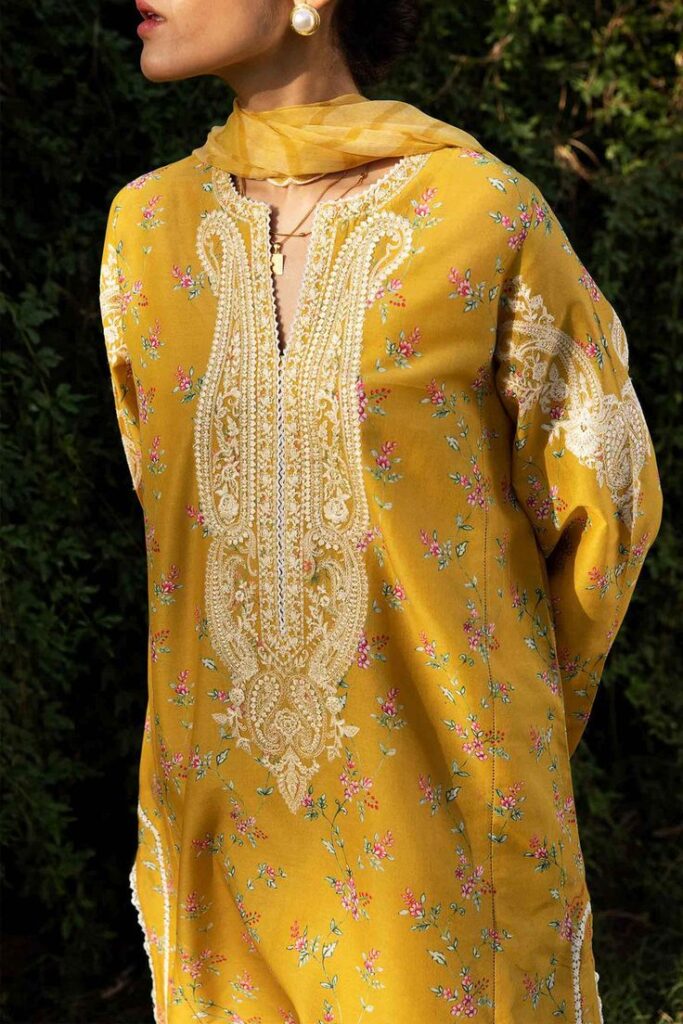Introduction:
The fashion industry of Pakistan is a dynamic and burgeoning sector that encapsulates a rich tapestry of cultural heritage, creative expression, and economic growth. Renowned for its exquisite craftsmanship, intricate embroideries, and diverse textile traditions, Pakistani fashion has made significant strides on both the domestic and international fronts.

Historical Evolution:
From Traditional Roots to Modern Innovations
The evolution of Pakistan’s fashion industry is deeply rooted in its historical and cultural heritage. Traditional attire such as the shalwar kameez, saree, and kurta have been reimagined over the years, blending indigenous craftsmanship with contemporary aesthetics. The fusion of regional styles and techniques has paved the way for a unique and eclectic fashion landscape.
Key Players:
Designers, Brands, and Influencers
Pakistan boasts a talented pool of designers who have gained global recognition for their distinct design sensibilities. From seasoned veterans like HSY (Hassan Sheheryar Yasin) and Ali Xeeshan to emerging talents such as Zara Shahjahan and Sana Safinaz, each brings a distinctive flair to the industry. Moreover, the rise of social media influencers and digital platforms has further amplified the reach and influence of Pakistani fashion on a global scale.



Textile Heritage:
A Tapestry of Tradition and Innovation
Central to Pakistan’s fashion industry is its rich textile heritage, which encompasses a wide array of fabrics, prints, and techniques. From the luxurious silks of Punjab to the intricate embroideries of Sindh and Balochistan, each region contributes to the vibrant tapestry of Pakistani textiles. Moreover, the revival of traditional crafts such as handloom weaving and block printing has sparked a renaissance in sustainable and ethical fashion practices.

Fashion Weeks and Events:
Showcasing Creativity and Talent
Pakistani fashion weeks and events serve as platforms for designers to showcase their latest collections and innovations. Events such as Fashion Pakistan Week and PFDC Sunsilk Fashion Week attract industry insiders, celebrities, and fashion enthusiasts alike. These gatherings not only promote local talent but also facilitate collaborations and networking opportunities within the industry.
Global Influence:
Making Waves on the International Stage
In recent years, Pakistani fashion has gained traction on the global stage, thanks to the efforts of designers, influencers, and industry stakeholders. Celebrities and dignitaries worldwide have embraced Pakistani couture, showcasing it at red carpet events and prestigious award ceremonies. Furthermore, collaborations with international brands and retailers have facilitated the global dissemination of Pakistani fashion, making it accessible to a broader audience.
Challenges and Opportunities:
Navigating the Path Ahead
Despite its successes, the Pakistani fashion industry faces several challenges, including infrastructural limitations, lack of institutional support, and counterfeiting issues. Moreover, shifting consumer preferences and the rise of fast fashion pose significant challenges to traditional artisans and craftsmen. However, amidst these challenges lie opportunities for innovation, collaboration, and sustainable growth.
Future Prospects:
Charting a Course for Progress
As Pakistan’s fashion industry continues to evolve, there is immense potential for growth and expansion. Embracing digital technologies, investing in skill development, and fostering collaborations with international partners are key to unlocking new opportunities. Moreover, promoting inclusivity, diversity, and sustainability within the industry will ensure its resilience and relevance in the years to come.
Conclusion:
The fashion industry of Pakistan is a vibrant tapestry woven with threads of tradition, innovation, and creativity. From its rich textile heritage to its global influence, Pakistani fashion continues to captivate audiences worldwide. As the industry navigates the challenges of the modern era, it remains steadfast in its commitment to celebrating cultural identity, fostering artistic expression, and shaping the future of fashion on a global scale.





